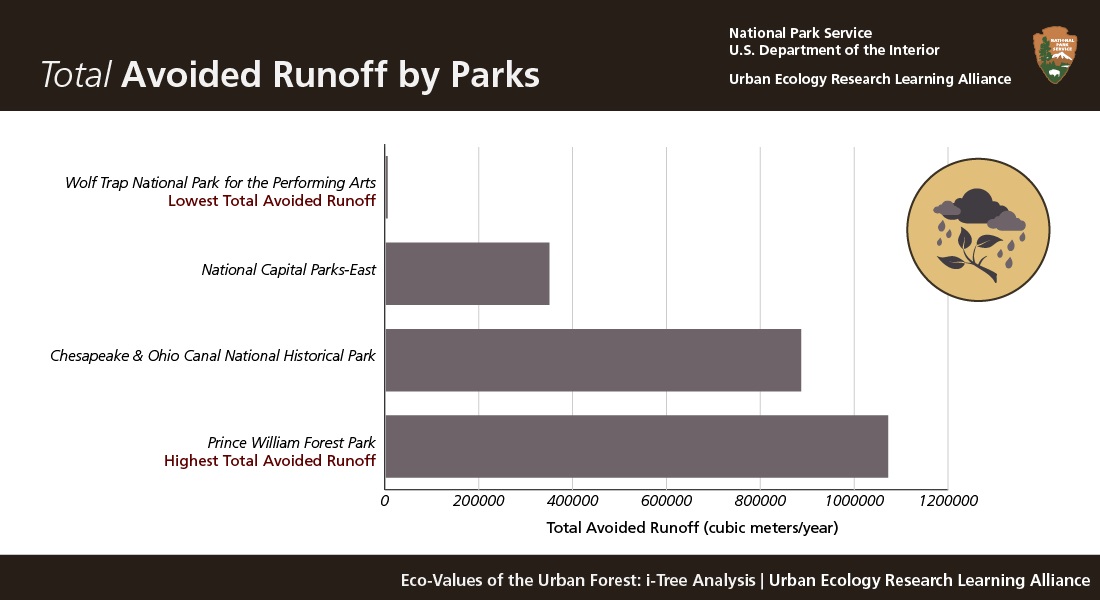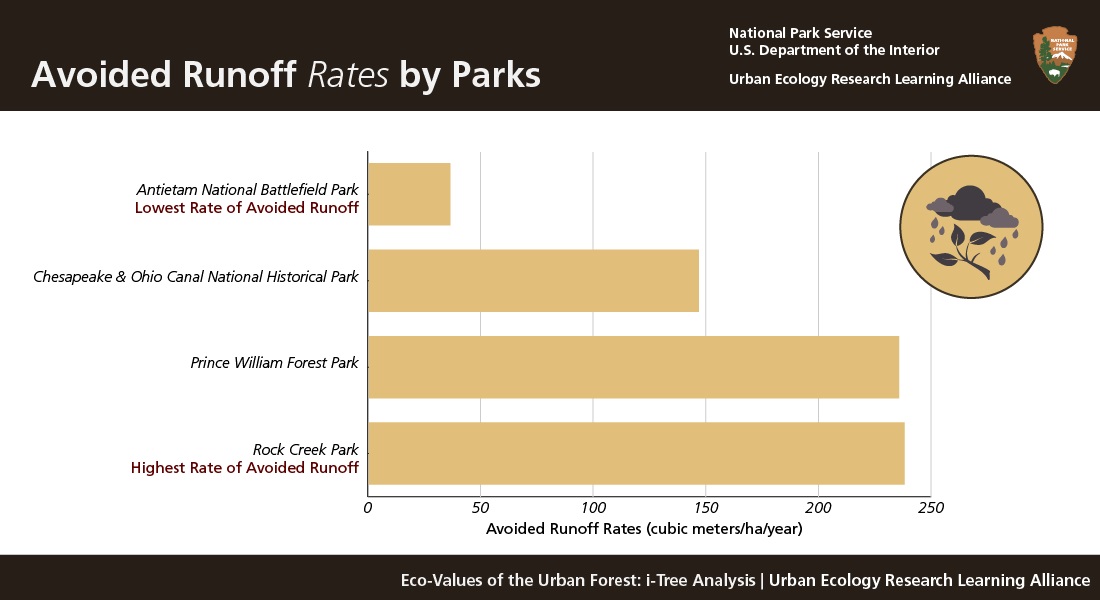Last updated: January 7, 2022
Article
Avoided Runoff and Urban Forests

Urban forests, however, are beneficial in reducing surface runoff. Trees and shrubs intercept precipitation, while their root systems promote infiltration and storage in the soil.
Avoided Runoff by NCA Urban Trees
Approximately 2.9 million cubic meters of surface runoff are avoided because of these urban forests. Manassas National Battlefield Park was not included in this analysis because reference precipitation data was not available for the reference dates.Annual avoided surface runoff is calculated based on rainfall interception by vegetation, specifically the difference between annual runoff with and without vegetation. Although tree leaves, branches, and bark may intercept precipitation too, only the precipitation intercepted by leaves is accounted for in this analysis. Precipitation estimates are based on local weather estimates from the user-designated NOAA weather station.


The Value of Avoided Runoff
Tree canopy captures stormwater on leaves and branches, increasing the time before rainfall reaches the ground, which is particularly helpful in reducing stormwater runoff from paved surfaces. Tree roots reduce erosion and create soil conditions that better allow rainwater to infiltrate into the ground and recharge the groundwater supply. The root systems of trees and shrubs further act as a filter system for rainwater, catching pollutants and helping purify the water.Next page: Structural Values
Previous: Carbon Storage

NPS Graphic
References
Environmental Protection Agency. (n.d.). Urbanization and Storm Water Runoff. Retrieved from https://www.epa.gov/sourcewaterprotection/urbanization-and-storm-water-runoffsFerguson, K. (2017). UERLA Resource Brief: Ecobenefits of National Capital Region Park Trees. Retrieved from https://irma.nps.gov/DataStore/Reference/Profile/2290091.
Garner, J. (2018). UERLA Resource Brief: Quantifying Ecological Benefits of Trees in the National Capital Region. Retrieved from https://irma.nps.gov/DataStore/Reference/Profile/2290092.
Urban Ecology Research Learning Alliance. (2018). i-Tree Ecosystem Analysis: Urban Forest Effects and Values. Retrieved from https://irma.nps.gov/DataStore/Reference/Profile/2290090.
Tags
- antietam national battlefield
- chesapeake & ohio canal national historical park
- george washington memorial parkway
- harpers ferry national historical park
- national capital parks-east
- prince william forest park
- wolf trap national park for the performing arts
- uerla
- rlc
- trees
- urban forest
- forest
- ecosystem services
- park science
- nca
- ncr
- runoff
- stormwater
- pollution
